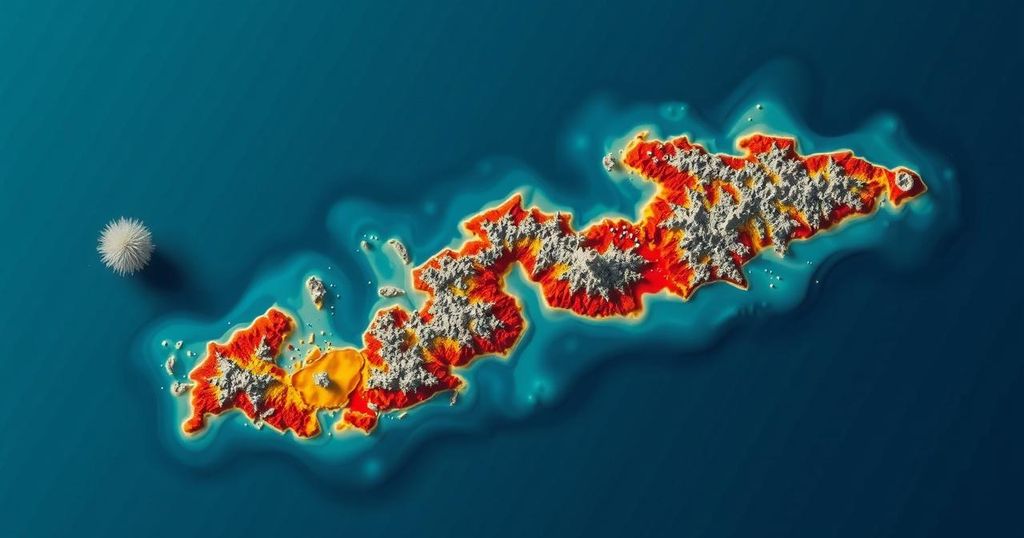As hurricane season ends, earthquakes remain a significant concern in the Virgin Islands. A recent magnitude 6.8 quake near Cuba highlights the need for awareness and preparedness among residents. The Puerto Rico Seismic Network (PRSN) monitors seismic activity and provides crucial information for safety. Seismologist Elizabeth Vanacore emphasizes understanding earthquake risks and engaging in preparedness activities to mitigate potential impacts from seismic events.
As the hurricane season comes to an end, it is imperative to consider another natural phenomenon affecting the Virgin Islands—earthquakes. These seismic events frequently occur in the Caribbean, including the Virgin Islands. A recent magnitude 6.8 earthquake near Cuba has highlighted the significance of earthquake preparedness among both residents and visitors of the islands. Elizabeth Vanacore, a seismologist from the Puerto Rico Seismic Network (PRSN), emphasized the importance of understanding earthquake risks and the role of the PRSN in monitoring seismic activity. The PRSN serves as the principal authority for seismic monitoring in Puerto Rico and the Virgin Islands. They ensure that residents receive timely information regarding earthquakes and associated hazards, including tsunamis. Following the recent quake in Cuba, Vanacore reiterated that local residents need not fear a similar event is imminent in their area. The PRSN’s technology and collaborative efforts with emergency management agencies help maintain public safety and preparedness. In light of the Cuba earthquake, Vanacore explained that such events are common in the region but do not predict further seismic activity near the Virgin Islands. The PRSN monitors over 200 real-time seismic stations and is part of the Advanced National Seismic System alongside the USGS, ensuring reliable information dissemination. This monitoring includes rapid reporting systems that relay information to emergency services and the public within minutes of an earthquake occurring. Vanacore provided insight into the magnitude of earthquakes, highlighting the substantial difference in energy release between even small changes in magnitude. A magnitude six earthquake can release energy equivalent to a significant amount of TNT, indicating a substantial force. She noted that the physical limitations of fault sizes restrict the potential for extremely high-magnitude earthquakes on Earth. Moreover, she reminded residents that despite advances in monitoring, predicting earthquake occurrences remains elusive. The PRSN continues to prepare the community for the inevitable earthquakes in this seismically active region. To enhance public safety, individuals are encouraged to participate in preparedness exercises and drills. Vanacore emphasized that knowing what to do during an earthquake—”Drop, Cover, and Hold On”—is crucial. Additionally, residents are urged to utilize provided resources from the PRSN and the Virgin Islands Territorial Emergency Management Agency (VITEMA) to prepare for both earthquakes and tsunamis. In conclusion, while the potential for earthquakes in the Virgin Islands persists, understanding the risks and preparedness strategies can significantly mitigate their impacts. Staying informed through trusted organizations like the PRSN fosters resilience within the community, ensuring that both locals and visitors are proactive in safeguarding their safety during seismic events. The importance of community cooperation in readiness for potential disasters cannot be overstated.
The Virgin Islands are located in a seismically active region of the Caribbean, making earthquake preparedness crucial for residents and visitors alike. The Puerto Rico Seismic Network (PRSN) plays a vital role in monitoring seismic activity, providing timely information, and disseminating earthquake safety measures. Following a powerful earthquake near Cuba, experts stress the importance of understanding local seismic hazards and preparing for potential quakes and tsunamis by engaging with community resources and action plans.
The Virgin Islands experience earthquakes as a common natural occurrence due to their geographical location. While recent seismic events can evoke concern, experts emphasize the unlikelihood of imminent large quakes in the region. Community preparedness, awareness of earthquake safety protocols, and regular engagement in drills are vital steps for residents and visitors to protect themselves. Utilizing resources from the PRSN and VITEMA contributes to overall safety and resilience in this seismically active area.
Original Source: stcroixsource.com






